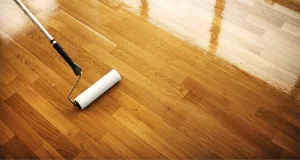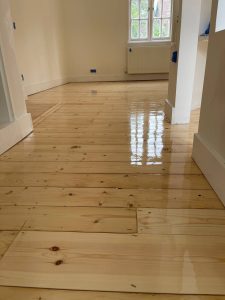How to Incorporate Floor Sanding into Your DIY Projects

For London homeowners looking to enhance their DIY skills, incorporating floor sanding into your projects can significantly improve the look and feel of your home. Whether you’re renovating an old property or simply updating a room, understanding the basics of floor sanding can help you achieve professional-quality results. This guide will walk you through the process, providing tips and techniques to ensure your DIY project is a success.
Understanding Floor Sanding
Floor sanding involves removing the top layer of a wooden floor to reveal a fresh, smooth surface. This process is essential for refinishing old floors, removing imperfections, and preparing the wood for a new finish. Proper sanding can restore the natural beauty of your floors and increase their longevity.
Preparing for Your DIY Floor Sanding Project

1. Assess the Floor Condition
Before starting, inspect your floor to determine its condition. Identify any areas that need repairs, such as loose boards, nails, or deep scratches. Address these issues before you begin sanding to ensure a smooth process.
2. Gather the Necessary Tools and Materials
Having the right tools is crucial for a successful floor sanding project. You’ll need:
- Drum sander and edge sander
- Sandpaper in various grits (coarse, medium, fine)
- Vacuum cleaner with a HEPA filter
- Protective gear (gloves, mask, goggles)
- Wood filler for repairs
3. Clear the Area
Remove all furniture, rugs, and decorations from the room. Ensure the space is clean and free of dust and debris. This preparation will make the sanding process smoother and more efficient.
Sanding Your Floors
1. Start with Coarse Grit Sandpaper
Begin by using coarse grit sandpaper (24-36 grit) to remove the old finish and level the surface. Move the sander in the direction of the wood grain to avoid scratches and achieve an even finish.
2. Progress to Medium and Fine Grits
Gradually move to medium grit (60-80 grit) and then fine grit (100-150 grit) sandpaper. This step-by-step approach ensures a smooth surface ready for finishing. Always vacuum between each sanding pass to remove dust and debris.
3. Use an Edge Sander for Corners and Edges
Edges and corners can be challenging to reach with a drum sander. Use an edge sander to tackle these areas, ensuring a consistent finish throughout the room.
Finishing Touches
1. Clean the Floor Thoroughly
After sanding, clean the floor thoroughly to remove all dust. Use a vacuum with a HEPA filter and a damp cloth to ensure the surface is dust-free before applying the finish.
2. Apply the Finish
Choose a finish that suits your style and the floor’s use. Options include polyurethane, oil-based finishes, and wax. Apply the finish according to the manufacturer’s instructions, allowing adequate drying time between coats.
Maintenance Tips

To maintain your newly sanded and finished floors, follow these tips:
- Regularly sweep and vacuum to remove dirt and debris.
- Use protective pads under furniture to prevent scratches.
- Clean spills immediately to avoid staining.
- Refinish the floor as needed to maintain its appearance and durability.
Conclusion
Incorporating floor sanding into your DIY projects can significantly enhance the beauty and value of your London home. By following these steps and using the right tools and techniques, you can achieve professional-quality results. If you prefer professional assistance, our certified floor sanding experts are here to help. Contact us today to learn more about our services and how we can assist with your next home improvement project.







The Difference Between Floor Sanding and Refinishing
The Difference Between Floor Sanding and Refinishing Understanding the Best Options for Your London[Read more...]
How to Create a Vintage Look with Floor Sanding and Finishing
How to Create a Vintage Look with Floor Sanding and Finishing Creating a vintage[Read more...]
Cork Tile Sanding
Cork is an environmentally friendly, green resource for flooring, easy to maintain, provides thermal and[Read more...]
The Best Practices for Sanding Oak Floors
The Best Practices for Sanding Oak Floors Expert Tips and Techniques for Achieving a[Read more...]
How to Prepare for Floor Sanding with Pets in the House
How to Prepare for Floor Sanding with Pets in the House Preparing for floor[Read more...]
How to Choose the Best Floor Sanding Products
How to Choose the Best Floor Sanding Products Essential tips for selecting high-quality sanding[Read more...]
How to Sand Floors with Decorative Inlays
How to Sand Floors with Decorative Inlays Sanding floors with decorative inlays[Read more...]
How to Incorporate Floor Sanding into Your DIY Projects
How to Incorporate Floor Sanding into Your DIY Projects For London homeowners looking to[Read more...]
The Science Behind Floor Sanding: Understanding the Process
Floor sanding is more than just a cosmetic enhancement; it’s a precise process that involves[Read more...]
Hardwood vs. Engineered Wood: Which is Better for Sanding?
When it comes to choosing the right flooring for your home, understanding the differences between[Read more...]